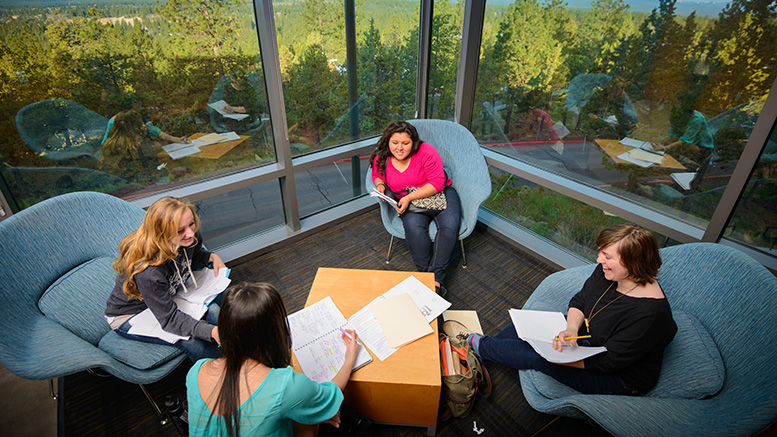“How would you rate yourself when it comes to note-taking?” instructor Scott Rowles asked a group of 16 students during a recent morning class at Central Oregon Community College’s (COCC) Bend Campus.
He solicited input from his class, trying to spotlight the basic challenges of this fundamental skill.
“Keeping up with your professor,” replied one student. “Knowing what to write,” added another. Rowles nodded knowingly.
Editor’s note: This article comes from the AACC 21st-Century Center. Visit the online center for resources and similar articles.
“It’s a challenging task,” he said. “Just like driving a car for the first time, it’s stressful. But it gets more manageable.”
After listing some different note-taking styles, Rowles’ lesson plunged deep: into the neuroscience of learning.
Rowles’ lesson is part of a relatively new offering at COCC called “College Success,” a three-credit course geared at student empowerment. The class covers things like individual learning styles and time management. Students learn techniques for how to tamp down stress and where to locate specific academic resources on campus.
Linked to the Promise
While the College Success course is open to any enrolled student at the college, it’s required attendance for one group in particular: Oregon Promise students.
The Oregon Promise gives recent Oregon high school graduates and GED recipients free tuition (with some restrictions) to any Oregon community college. Attaching first-year requirements to the grant is a measure of ensuring the state’s investment while also supporting students’ goals. Strong results are coming in.
“The student success rates are phenomenal,” said Alicia Moore, dean of student and enrollment services.
In fact, students who completed the Oregon Promise-mandated First Year Experience at COCC (which includes the College Success class, as well as academic advising and new student orientation) are simply finding better endurance in their academic journey.
In fall 2017, 88 percent of Oregon Promise students — required to follow COCC’s First Year path — persisted, completing their full course load for the term. But just two years prior, figures show that a similar group of fall term students — in both age and credit commitment, but attending without the First Year requirements — attained only a 76 percent completion rate. Though the dataset is small and still emerging, persistence seems to trend with these requirements.
“It’s both the mindset and the skills,” said Sara Henson, associate professor of human development, about the effect of the College Success classes. “Students find it very helpful to connect with their resources…it’s about connecting and building community.”
Getting prepared
Before the College Success classes even begin, Oregon Promise students (and soon, all new students at the college) go through several key steps in the months leading up to their first day.
It begins with an hour-long online orientation called Bobcat Welcome, a new piece to the program that’s built around an interactive experience. The welcome walks students through topics like financial aid and academic resources, getting them acquainted with the COCC community and how to best map out their college experience.
“The primary message behind this is to convey a strong sense that we believe in their success and are here to help,” Moore said.
After this, students participate in an advising and registration phase, held at all four COCC campuses, which includes small-group sessions designed for students pursuing either degree or certificate programs. Finally, a three-hour orientation, also offered at all four campuses each fall, helps students devise a ramp-up to their first three (crucial) weeks of being a new college student — akin to a confidence-boosting dress rehearsal.
The Oregon Promise grant is open to high school graduates, GED recipients and homeschooled students who attained a 2.5 GPA or higher. Once the grant is allocated, students need to enroll in a minimum of six credits and maintain continuous enrollment.
“If they stop out, even for one quarter, then they lose the grant,” Moore said. “The big thing is they have to attend within six months of graduating from high school. If they graduate in June and wait until winter quarter, it’s too late.”
Student Vance Schierling is using Promise dollars to become an occupational therapist.
“The application process was pretty straightforward,” he said. “This grant meant that I was able to go to school and not worry about money. Before this, I was working a lot, making sure I could afford to go to school.”
Financial aid records show that 774 COCC students are receiving Oregon Promise support for the 2018-19 academic year.

